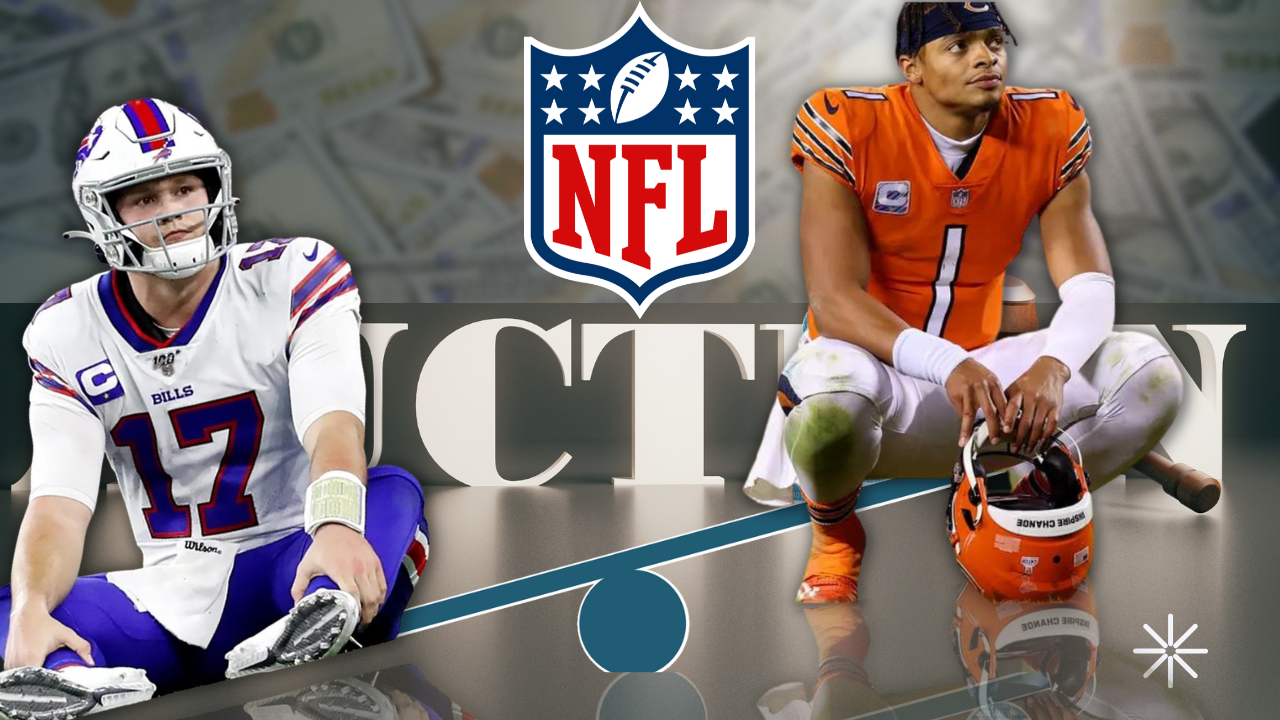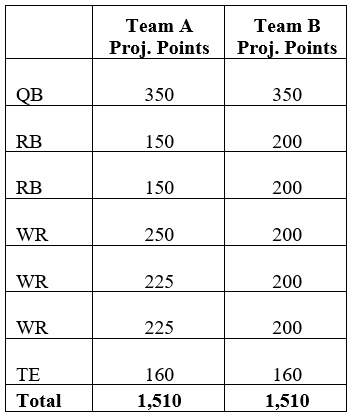
Auction Draft Roster Construction: Why Positional Imbalance Is Good
Auction Draft Roster Construction Strategy
When it comes to auction draft strategy, almost every article you find online will encourage you to have a budget by position come draft day to ensure you walk away with a balanced roster.
On the surface, this sounds like intuitive advice to a novice auction drafter. But the issue with a positional budget is that, in an auction draft, you cannot know for certain how much the various tiers of each position will cost.
What if I plan to spend $35 on my RB1, but all the RBs worth that price go for way more? Should I pay up to get an RB1 from the tier I planned, even though it will cost more than I think is wise? Or should I settle for a lower quality RB1? If I spend more or less on my RB1 than my budget, at what other position should I adjust my budget to compensate? How would I know the best way to adjust, since I won’t know the prices the other positions (and tiers within those positions) will cost?
In reality, how much you spend on one position vs another will never be the determining factor in how good your team is. Our focus instead should be on the prices we pay for an individual player’s expected output. Put simply, our goal in an auction draft is to buy more expected fantasy points with our $200 than our opponents. It does not matter from which positions those points come.
Because all we care about is maximizing our expected points purchased, the best course of action in an auction draft is to ditch the positional budgets. Instead, you should favor a value-based draft (VBD) approach, which would tell you to pursue value wherever it presents itself. It is position agnostic.
When people hear about a VBD approach, their biggest hesitation is that it could lead to an imbalanced roster. It’s true that you could end up with a roster where you spend far more on one position than another. For example, if everyone is overvaluing RBs, you might walk away with a few cheap ones and a robust WRs corps.
This scares some people. But roster imbalance is not as bad as everyone makes it out to be.
In fact, roster imbalance out of the draft can actually be a positive for your team, all else being equal. Let’s take a look at an example that helps illustrate how and why that is.
Get: The Fantasy Football Auction Roadmap
Illustrative Example
Consider an example of two different teams. Suppose they cost the same to assemble in the auction, and they have the same amount of expected points coming out of the draft.
- Team A has a roster with a couple of RB3s in the starting lineup, but three WR1s.
- Team B has a couple of RB2s and three WR2s.
- Assume equal output of QB and TE for both teams.

You’ll see that Team B is expected to get 200 points from all 5 of its RBs and WRs. Meanwhile, Team A has elite production at WR, but essentially replacement level production at RB. These differences net out to the same projected number of points for each team, though.
So, which team would you prefer to leave your draft with? The one with glaring holes but also a few studs, or the balanced roster?
If you were to put names to the projected points, most people would say they would prefer to have Team B rather than Team A. People will judge a team based on the weakest links in a starting lineup, as their eye gravitate towards the “holes” in a lineup. Everyone dreams of having a completely flawless roster out of the auction, and thus focus on the imperfections they can spot. But that’s no way to actually judge a roster.
The team you should want is Team A. Let’s consider why.
With Team A, you have three WR1s on your team. Those are more valuable players than any player on Team B.
Team B, in contrast, has decent WRs. They’re still expected be much better than a replacement level WR. Thus, while Team B’s WRs aren’t as good as Team A’s, it will still be difficult for Team B to improve its WR output because the only way to do so would be to acquire elite WRs (which is very difficult to do mid-season).
In other words, Team B is going to be hard-pressed to improve the performance/output of its WRs and close the gap with Team A.
But what about RB? Surely Team B will outperform Team A at RB to make up for the difference?
Perhaps to start the season, but Team A’s RBs are providing little more than replacement level production. In other words, Team A’s RB production really can’t get much worse, but it wouldn’t be that difficult for it to get better. It’s likely that Team A will be able to improve its output at those RB positions as the year goes on through the waiver wire. Team A would also have a roster that could easily align with another team for a trade to improve its RB positions, if it really needed to pull that lever.
In short, due to its imbalance, Team A has more avenues to improve its scoring output throughout the year than Team B. Team A has an advantage by having elite players at one position and near-replacement level players at another. Team is more likely to close the gap of RB production it has with Team B, than Team B is to close the gap of WR production with Team A.
More: Deciphering The Seahawks Backfield: Still The Kenneth Walker Show?
Conclusion
Having an imbalanced roster coming out of the draft is actually a benefit to your team rather than a detriment.
Does that mean we should actively pursue imbalance going into an auction draft? Not necessarily.
As is talked about extensively in the Auction Roadmap, pursuing maximum value is always the objective, wherever that value presents itself. If there’s a great deal on an RB2 relative to my price sheet, I’m not going to pass on it just because I’m trying to start the season off with an imbalanced roster.
But I hope this article gives you the confidence to pursue value wherever it may present itself, even if it is at the expense of a positionally balanced roster. Don’t confine yourself to an arbitrary positional budget. If the value in the auction is clearly presenting itself at one position, do not be afraid to aggressively pursue that value. Just because you have ‘weak links’ in your starting lineup to begin the season does not mean your team is weaker than other teams. It may actually make you stronger.
If you enjoyed this article and want to learn more about value-based drafting, player valuation, roster construction considerations, and other auction draft strategies, I hope you consider purchasing the Auction Roadmap. For $9.99, you’ll get the most comprehensive auction draft guide on the market. Plus, 100% of the proceeds will go to the Boys and Girls Clubs of Chicago.
Let’s talk auction draft strategy! Jump in our Discord and join the discussion!
RANKINGS | DYNASTY | REDRAFT | ROOKIES
 Draft With Us On Underdog! Use Promo-Code: YARDSPER to double your deposit!
Draft With Us On Underdog! Use Promo-Code: YARDSPER to double your deposit!






